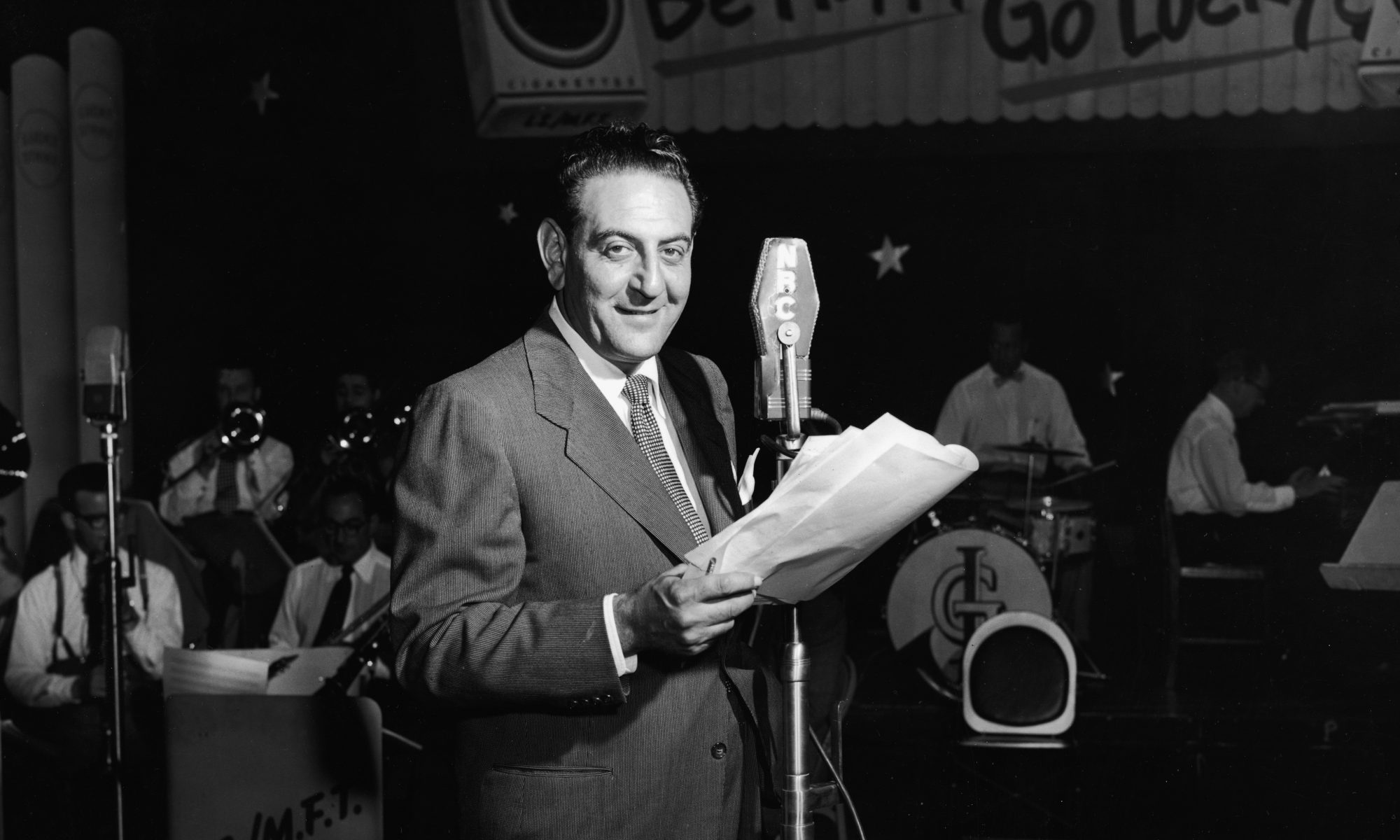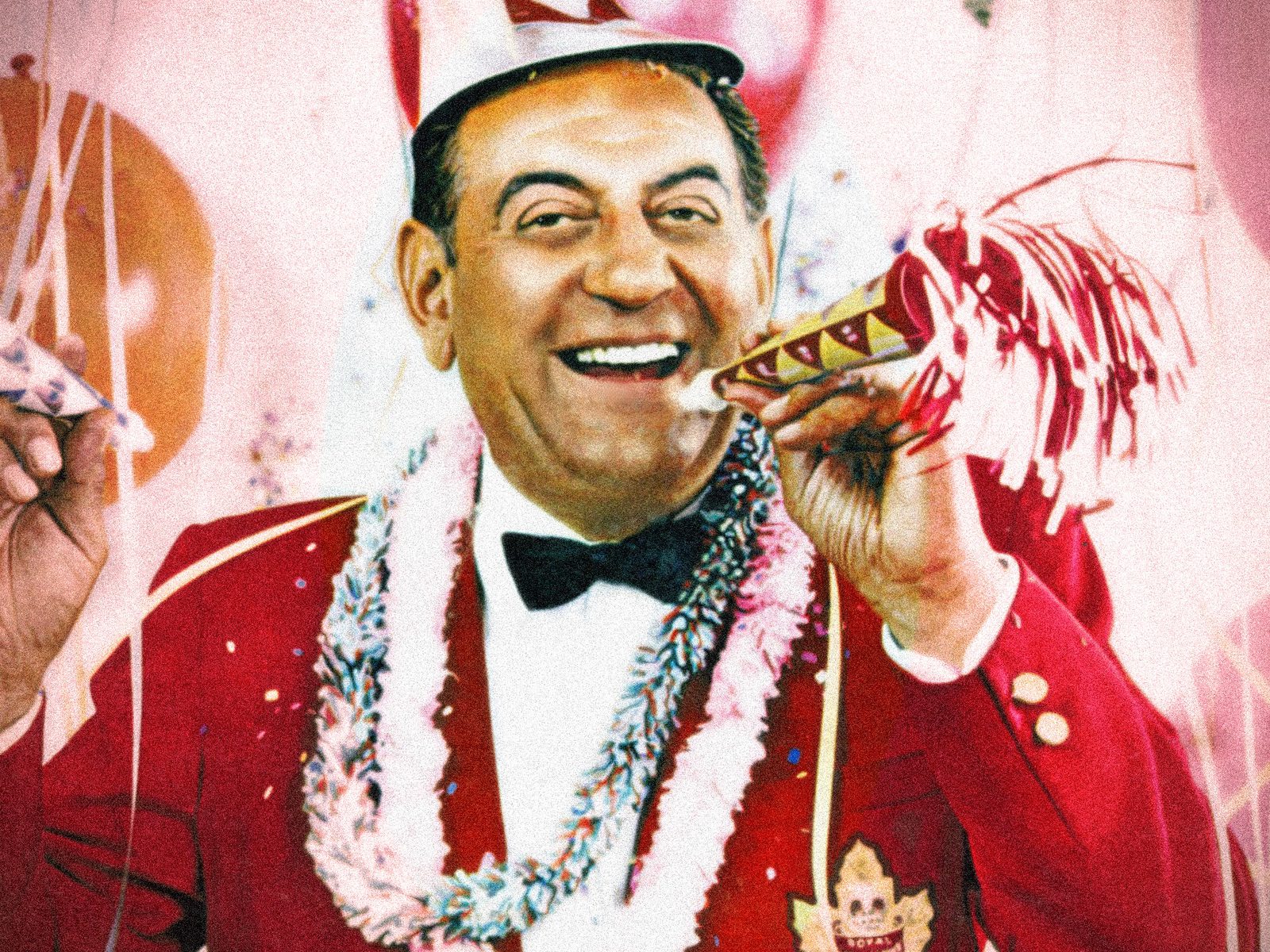Lombardo was born in London, Ontario, to Italian immigrants, Gaetano Sr. and Lena Lombardo. His father, who had worked as a tailor, was an amateur singer with a baritone voice and had four of his five sons learn to play instruments so they could accompany him. Lombardo and his brothers formed their first orchestra while still in grammar school and rehearsed in the back of their father’s tailor shop. Lombardo first performed in public with his brother Carmen at a church lawn party in London in 1914. His first recording session took place where trumpeter Bix Beiderbecke made his legendary recordings—in Richmond, Indiana, at the Gennett Studios—both during early 1924.
After that solitary Gennett session, they recorded two sessions for Brunswick (a rejected session in Cleveland in late 1926 and an issued session for Vocalion in early 1927). The band then signed to Columbia and recorded prolifically between 1927 and 1931. In early 1932, they signed to Brunswick and continued their success through 1934 when they signed to Decca (1934–35). They then signed to Victor in later 1935 and stayed until mid 1938 when again they signed to Decca.
In 1938, Lombardo became a naturalized citizen of the United States.
Although Lombardo’s “sweet” big-band music was viewed by some in the jazz and big-band community of the day as “boring, mainstream pap”, trumpeter Louis Armstrong regularly named Lombardo’s band as his favorite orchestra.
Lombardo is remembered for almost a half-century of New Year’s Eve big band remotes, first on radio, and then on television. Lombardo’s orchestra played at the Roosevelt Grill in the Roosevelt Hotel in New York City from 1929 (“radio’s first nationwide New Year’s eve broadcast”) to 1959, and from then until 1976 at the Waldorf Astoria Hotel. Live broadcasts (and later telecasts) of their performances were a major part of New Year’s celebrations across North America; millions of people watched the show with friends at house parties. Because of this popularity, Lombardo was called “Mr. New Year’s Eve”.
The band’s first New Year’s Eve radio broadcast was in 1928; within a few years, they were heard live on the CBS Radio Network before midnight Eastern Time, then on the NBC Radio Network after midnight.
On December 31, 1956, the Lombardo band did their first New Year’s TV special on CBS; the program (and Lombardo’s 20 subsequent New Year’s Eve TV shows) included a live segment from Times Square (long the focal point of America’s New Year’s Eve celebrations) showcasing the arrival of the New Year. During the early years, pioneer broadcast journalist Robert Trout reported from Times Square; in later years, another longtime newsman, Ben Grauer, reported from Times Square, though Grauer worked for NBC.
While CBS carried most of the Lombardo New Year’s specials, there were a few years in the late 1960s and early 1970s when the special was syndicated live to individual TV stations instead of being broadcast on a network.
By the middle 1970s, the Lombardo TV show was facing competition, especially for younger viewers, from Dick Clark’s New Year’s Rockin’ Eve, but Lombardo remained popular among viewers, especially older ones.
Even after Lombardo’s death, the band’s New Year’s specials continued for two more years on CBS. The Royal Canadians’ recording of the traditional song “Auld Lang Syne” still plays as the first song of the new year in Times Square.

